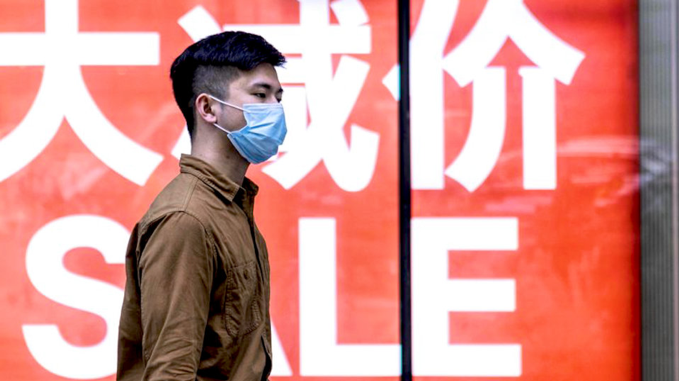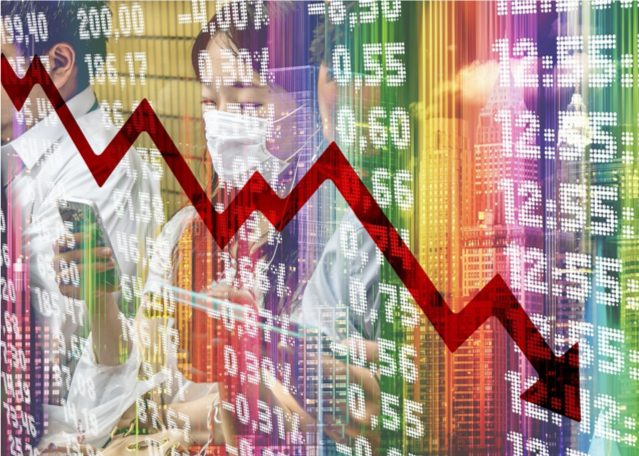Pulse on China
Chinese Analysis of COVID-19’s Impact on the Economy
by Yucong Li, Mengtian Wenren, Masters candidates, UC San Diego School of Global Policy and Strategy
“Pulse on China” is a series of articles comparing Mainland China’s media coverage of key events with those outside of China. Analysis is conducted by graduate students with native Chinese language skills and focus on Chinese affairs.
Editor’s Note: In this column, we ask our students to survey Chinese media reports on an important topic whose content may not be immediately, or ever, available in English. In this age of global circulation of news and analysis, our readers can gain knowledge of important developments in any other country, almost instantly, in English. Nevertheless, English coverage leaves blind spots, depriving us of important insights into the informational universe citizens of other countries, the Chinese in our case, inhabit. As we are aware, this informational universe is deeply shaped by censorship, as all official media is controlled by the Chinese state. In this column, we assemble Chinese-language reporting that is not yet available in English with minimal editorializing on our part. We bring these reports to you in a matter-of-fact manner so you can form your own critical understandings of the information provided. For your convenience, we provide direct links to the Chinese articles.
 COVID-19 has brought unprecedented challenges to the Chinese economy. Even though China has brought the pandemic under control, it experienced its first negative quarterly economic growth in first quarter since 1992. China’s GDP growth rate for the first quarter GDP shrank at -6.8% in 2020 compared to the same period last year. Faced with the negative outcomes, the Chinese press has focused on the positive outlook. People’s Daily (Overseas Edition) draws its readers to economic indicators from March while the Global Times emphasizes the long-term potential of economic growth, acknowledging setbacks resulting from the pandemic.
COVID-19 has brought unprecedented challenges to the Chinese economy. Even though China has brought the pandemic under control, it experienced its first negative quarterly economic growth in first quarter since 1992. China’s GDP growth rate for the first quarter GDP shrank at -6.8% in 2020 compared to the same period last year. Faced with the negative outcomes, the Chinese press has focused on the positive outlook. People’s Daily (Overseas Edition) draws its readers to economic indicators from March while the Global Times emphasizes the long-term potential of economic growth, acknowledging setbacks resulting from the pandemic.
Sina.com published a speech by Justin Yifu Lin, former chief economist for the World Bank, who suggests that it may not be advisable to boost this year’s GDP growth rate simply for the sake of reaching
China’s interim goal of “building a moderately prosperous society”(全面建成小康社会) by 2020. According to
Lin back in early May, delaying the first centennial goal by one year, on the assumption that China’s economy will again register strong growth next year, is warranted. Toward the end of May, however, Chinese premier Li Keqiang still expressed the hope of “completing the building of a moderately prosperous society in all respects this year,” even though he dropped any mention of GDP growth target at the National People’s Congress. Instead, Premier Li proposed a framework of "six stabilizations plus six protections" (六稳六保)to keep the fundamentals of the economy stable.
 China’s economy recovered in the second quarter with a growth rate of 3.2%. By early July, China’s stock market was at an all-time high since 2018, a feat that China Central Television attributes to the country’s excellent epidemic control and prevention capabilities. An article in the People's Daily stated that China’s quick bounce back to upward growth brings confidence to a global economic recovery.
China’s economy recovered in the second quarter with a growth rate of 3.2%. By early July, China’s stock market was at an all-time high since 2018, a feat that China Central Television attributes to the country’s excellent epidemic control and prevention capabilities. An article in the People's Daily stated that China’s quick bounce back to upward growth brings confidence to a global economic recovery.
Some economists, such as professor Wei Jie from Tsinghua University, worry about the effect of rising debt and a loose monetary supply. The contradiction between improving macroeconomic indicators and worsening livelihoods is becoming more glaring. The government has loosened control over street vending and encouraged extending weekend holidays to boost demand and consumer confidence. But according to data released by the National Bureau of Statistics of China in mid-July, the per capita disposable income and consumption expenditures of the Chinese national residents declined in the first half-year compared to a year ago. Other economists, such as professor Zhu Ning from Shanghai Jiao Tong University, urge the government to pay more attention to employment and household financial stability, and they remain wary of the central government‘s push for the so-called “new infrastructure projects.”(新基建) Unlike traditional infrastructure, "new Infrastructure" refers to the fundamental high-tech investments such as 5G, cloud computing, intelligent manufacturing, and data centers. Beside stimulating growth and generating high-paying jobs, this strategy can foster the development of new industries, and boost China’s global competitiveness in advanced technologies.
 Still, problems abound for China’s “new infrastructure” strategy. The central government cannot afford to expend another four trillion RMB investment as it did in 2008. Some Chinese economists call for the mobilization of private capital, which remains wary of this push. Across today’s Chinese press, there is no shortage of economists who insist that China has to stay open and pursue a global-oriented market strategy rather than relying on the so-called “internal circulation” for economic development. To them, how to overcome the impulse against globalization in the post-epidemic era is an important for China.
Still, problems abound for China’s “new infrastructure” strategy. The central government cannot afford to expend another four trillion RMB investment as it did in 2008. Some Chinese economists call for the mobilization of private capital, which remains wary of this push. Across today’s Chinese press, there is no shortage of economists who insist that China has to stay open and pursue a global-oriented market strategy rather than relying on the so-called “internal circulation” for economic development. To them, how to overcome the impulse against globalization in the post-epidemic era is an important for China.
Read More: |
|
Start the People's War in China's Economic Internal Circulation, Global Times, July 23, 2020 |
